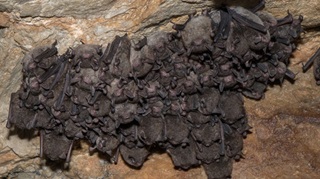Bringing Michigan’s pheasant population back into prime time
Michigan Pheasant Restoration Initiative aims to restore one of the state’s ‘iconic species’
It’s a collective effort—and it’s aimed at making pheasants a big deal on Michigan’s small-game hunting scene again.
“Pheasants used to be king. There were times when people in the state of Michigan used to close their stores, close schools, on opening day of pheasant season,” notes wildlife biologist, the Michigan Department of Natural Resources’ upland gamebird specialist and program leader.
Since the 1950s, pheasant hunting in Michigan—and the statewide pheasant population in general—have been in steady decline, due in part to changes in agricultural practices and land use.
Five years ago, though, the DNR began quarterbacking a pilot project called the Michigan Pheasant Restoration Initiative to put the brakes on that decline.
And in cooperation with groups like Pheasants Forever, Ducks Unlimited, Michigan United Conservation Clubs, and various government agencies, the DNR has made important strides in protecting pheasants in the Great Lakes State—improving 7,400 acres of grassland and 3,160 acres of food plots.
“We’re committed to making sure this is a successful partnership,” says DNR director Keith Creagh. “If we’re to get pheasants back on the landscape, and allow them to be one of our iconic species, like they have been in the past, we’re committed to working with our local partners.”
The initiative is based primarily on restoring pheasant habitat, and encouraging small game hunting opportunities, on key areas of public land. One of those areas is the Crane Pond State Game Area in Cass County, near Three Rivers.
Enbridge’s Line 6B Replacement Project, now in its final stages of the land restoration process, runs for about two miles across the Crane Pond State Game Area. Through the life of the project, Enbridge worked under the DNR’s direction to restore and improve habitat impacted during construction.
And as part of the agreement, Enbridge recently contributed $500,000 to the Michigan Pheasant Restoration Initiative for habitat restoration activities over the next three years, while the DNR will provide $50,000 worth of in-kind services.
“The DNR and Enbridge have worked closely together for a number of years, now, on the pipeline project through the Crane Pond State Game Area,” remarks Steve Chadwick, assistant chief for the DNR’s wildlife division.
“This partnership has resulted in grassland habitat restoration on land adjacent to, and directly impacted by, the pipeline construction,” adds Chadwick. “This grassland habitat will secure the future of wildlife species like pheasants, rabbits and deer, along with a host of songbirds and pollinating insects.”
The Crane Pond, Fabius and Three Rivers state game areas are all located within five miles of each other, all with similar soil makeup and wildlife communities.
“Enbridge’s funds will provide a very nice boost to our efforts to improve key public lands in Michigan Pheasant Restoration Initiative counties,” notes Bill Vander Zouwen, Michigan representative for Pheasants Forever.









